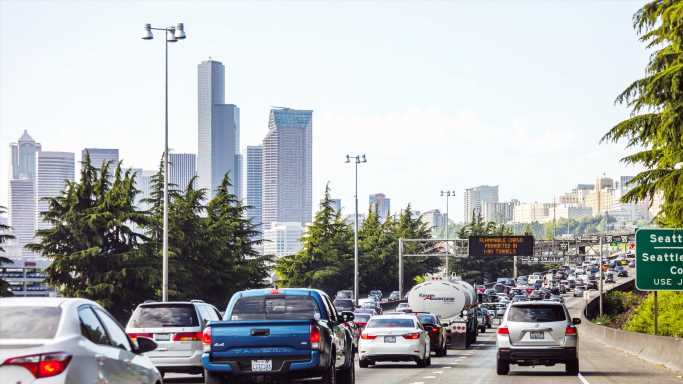The Worst Cities To Drive in Every State
A leading cause of death in the United States, motor vehicle crashes result in 43,000 fatalities each year, or more than 100 every day, according to the National Highway Traffic Safety Administration. Another more than 2 million Americans were admitted to emergency rooms for injuries sustained in auto accidents. And while most drivers are not killed or injured in an accident, there are other drawbacks. For example, the typical commuter in the U.S. spends over four hours getting to and from work each week, and in some parts of the country, daily commuters lose over 40 hours due to traffic congestion every year. (Here is a look at the most congested cities in the world.)
The drawbacks of the daily commute, specifically for drivers, vary across the country. Variables such as weather, unsafe driving habits, road conditions, and population density can make driving in some cities more dangerous and time consuming than in others.
24/7 Wall St. created an index of four key measures to identify the worst city to drive in each state. The four measures include the number of deadly auto accidents adjusted for population, average hours lost to traffic congestion per commuter, average overall commute time, and the motor vehicle theft rate. Each measure is for the latest year of available data. We ranked metro areas in each state by their combined index score.
A city’s ranking on this list only means that it compares less favorably to other metro areas in the state. As a result, the roads in several of these places are relatively safe and uncongested. Boise, Idaho, for example, is a worse place to drive than the other four metro areas in the state. However, the city’s average commute time of 22.7 minutes is about three minutes less than the national average, and the local fatal crash rate of 6.4 deadly accidents per 100,000 people is lower than in nearly 85% of all other U.S. metro areas.
Notably, in most metro areas on this list, fatal crash rates are below the comparable statewide average. This is partly because, according to the National Highway Traffic Safety Administration, the rate of traffic deaths per vehicle miles traveled is nearly twice as high in rural areas as it is in urban areas, and metropolitan areas are generally urban and suburban. Drivers in urban areas tend to have better access to emergency medical services, are generally less likely to speed or be distracted, and are more likely to wear a seatbelt than rural drivers. (Here is a look at the worst holidays to drive.)
Click here to see the worst cities to drive in every state.
Click here to see our detailed methodology.
Sponsored: Find a Qualified Financial Advisor
Finding a qualified financial advisor doesn’t have to be hard. SmartAsset’s free tool matches you with up to 3 fiduciary financial advisors in your area in 5 minutes. Each advisor has been vetted by SmartAsset and is held to a fiduciary standard to act in your best interests. If you’re ready to be matched with local advisors that can help you achieve your financial goals, get started now.
Source: Read Full Article

